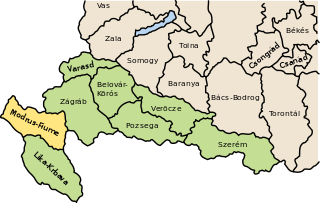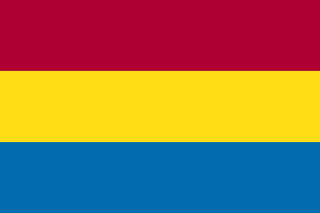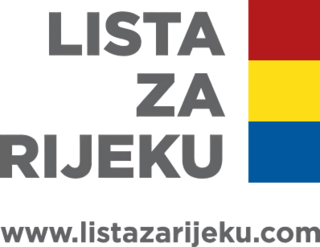| Tenure | Portrait | Incumbent | Notes |
|---|
| Hungarian suzerainty |
| 20 October 1776 to 1783 |  | József gróf Majláth Székhélyi ,
Governor | |
| 1783 to 1788 |  | Pál gróf Almásy Zsadányi ,
Governor | |
| 1788 to 1791 |  | János Pétar gróf Szápáry ,
Governor | |
| 1791 to 1801 | | Sándor Pászthory ,
Governor | |
| 1801 to 1809 |  | József Klobusiczky ,
Governor | |
| Illyrian Provinces ( French suzerainty) |
| July 1809 to November 1809 | | Marc Bryd (Marco de Bryde),
Intendant | Did not take office |
| November 1809 to 1810 | | François Boleslas Casimir Duval de Chassenon de Curzay ,
Intendant | |
| 1810 to June 1811 | | Marie Méry, comte de Contades ,
Intendant | |
| 1811 to 1813 | Part of Civil Croatia | |
| French Intendants of Civil Croatia in Karlovac |
| July 1809 to November 1809 | | Lettardi,
Intendant | |
| November 1809 to November 1810 |  | Louis-Philippe-Joseph Girod de Vienney, baron de Trémont ,
Intendant | |
| November 1810 to June 1811 | | Savinio conte Giorgi ,
Intendant | |
| 27 June 1811 to 1811 | | Marie Méry, comte de Contades ,
Intendant | |
| 1811 to 1813 | | François-Joseph-Ferdinand Marchal ,
Intendant | |
| British suzerainty |
| 3 July 1813 to 26 August 1813 |  | William Hoste ,
Commander | |
| Austrian suzerainty |
| 26 August 1813 to September 1813 |  | Laval Graf Nugent von Westmeath ,
Commander | |
| 2 September 1813 to 1813 | | Josip Lazarić ,
Commander | |
| 23 November 1813 to 1814 | | Giuseppe barone dell' Argento ,
Provisional Intendant | |
| 7 August 1814 to 1 October 1814 |  | Franz Joseph Graf von Saurau ,
Commissioner | |
| 1 October 1814 to 1815 | Franz Joseph Graf von Saurau ,
Kreishauptmann | District Captain |
| 1815 to 1816 | | Johann Nepomuk Freiherr von Grimschitz ,
Kreishauptmann | District Captain |
| Kingdom of Illyria ( Austrian suzerainty) |
| April 1816 to 1819 | | Joseph Freiherr von Weingarten ,
Kreishauptmann | District Captain |
| 8 August 1819 to 1822 | | Ludwig Freiherr von Humbracht ,
Kreishauptmann | District Captain |
| Hungarian suzerainty |
| 15 October 1822 to 1823 |  | György Majláth ,
Royal Commissioner | |
| 1823 to 1837 |  | Ferenc Ürményi ,
Governor | |
| 5 July 1837 to 22 April 1848 |  | Pál Kiss de Nemeskér ,
Governor | |
| 23 April 1848 to 31 August 1848 |  | János Nepomuk gróf Erdödy ,
Governor | |
| Croatian suzerainty |
| 31 August 1848 to 19 May 1859 |  | Josip Jelačić ,
Governor | Ban of Croatia, Slavonia and Dalmatia |
| 5 September 1848 to 6 August 1850 | | Josip Bunjevac ,
Royal Commissioner | |
| July 1851 to 1852 | | Antun Rušnov ,
Civil Captain | |
| 1852 to 1856 | | Ernst Freiherr von Kellersperg ,
Civil Captain | |
| 1856 to 1860 |  | Karl Sigmund Graf Hohenwarth ,
Civil Captain | |
| 1860 to 1861 | | Hermann Freiherr von Sterneck ,
Royal Commissioner | |
| 1861 to 1867 | | Bartol Benedikt Zmajić ,
Civil Captain | |
| Hungarian suzerainty |
| 6 April 1867 to 29 July 1870 | | Ede Cseh de Szentkatolna ,
Royal commissioner | |
| 29 July 1870 to 5 December 1872 |  | József gróf Zichy de Zich et Vásonkeö ,
Governor | |
| 26 February 1873 to 1 November 1883 |  | Géza gróf Szapáry de Szapár ,
Governor | |
| 1 November 1883 to 6 March 1892 |  | Ágost gróf Zichy ,
Governor | |
| 6 March 1892 to 2 October 1896 |  | Lajos gróf Batthyány de Nemetujvár ,
Governor | |
| 2 October 1896 to 14 July 1897 |  | Rezsö báró Abele de Lilienberg ,
Governor | |
| 14 July 1897 to 23 November 1897 | | Tibor Gaal de Hatvan ,
acting Governor | 1st term |
| 23 November 1897 to 2 August 1903 |  | László gróf Szapáry de Szapár ,
Governor | |
| 2 August 1903 to 10 December 1903 | | Tibor Gaal de Hatvan ,
acting Governor | 2nd term |
| 10 December 1903 to 17 February 1905 |  | Ervin báró Roszner ,
Governor | |
| 17 February 1905 to 17 October 1905 | | Tibor Gaal de Hatvan ,
acting Governor | 3rd term |
| 17 October 1905 to 26 December 1905 |  | Pál gróf Szapáry de Szapár ,
Governor | |
| 26 December 1905 to 24 May 1906 | | Tibor Gaal de Hatvan ,
acting Governor | 4th term |
| 4 April 1906 to 29 April 1906 | | György gróf Károlyi de Nagykároly ,
Governor | |
| 24 May 1906 to 7 December 1909 |  | Sándor gróf Nákó de Nagyszentmiklós ,
Governor | |
| 7 December 1909 to 13 November 1910 |  | István gróf Wickenburg de Capelló ,
acting Governor | |
| 13 November 1910 to 31 July 1917 | István gróf Wickenburg de Capelló ,
Governor | |
| 31 July 1917 to 29 October 1918 |  | Zoltán Jekelfalussy de Jekel- és Margitfalva ,
Governor | |
| Status indeterminate (Principal Allied and Associated Powers control) |
| 28 October 1918 to 17 November 1918 |  | Antonio Grossich ,
President of the Italian National Council of Fiume | |
| 29 October 1918 to 17 November 1918 | | Rikard Lenac ,
Administrator | Veliki župan, appointed on behalf of the State of Slovenes, Croats and Serbs; in opposition |
| Italian/Allied suzerainty |
| 17 November 1918 to 8 September 1920 |  | Antonio Grossich ,
President of the Italian National Council of Fiume | |
| 17 November 1918 to 29 November 1918 |  | Enrico Asinari di San Marzo ,
Military Governor | |
| 29 November 1918 to 28 August 1919 |  | Francesco Grazioli ,
Military Governor | |
| 29 August 1919 to 13 September 1919 | | Vittorio Emanuele Pittaluga ,
Military Governor | |
| 14 September 1919 to 8 September 1920 |  | Gabriele D'Annunzio ,
Commander of the City of Fiume | |
| Italian Regency of Carnaro |
| 8 September 1920 to 29 December 1920 |  | Gabriele D'Annunzio ,
Primo Rettore | First Chancellor; ousted by the Royal Italian Army during the Bloody Christmas |
| 29 December 1920 to 31 December 1920 |  | Riccardo Gigante ,
President of the Municipal Council of Fiume | |
| 31 December 1920 | Establishment of the Free State of Fiume , according to the Treaty of Rapallo |
| Free State of Fiume |
| 31 December 1920 to 27 April 1921 |  | Antonio Grossich ,
Chairman of the Provisional Government of the State | |
| 27 April 1921 to 28 April 1921 |  | Riccardo Gigante ,
President of the Provisional Directory of Fiume | |
| 28 April 1921 to 13 June 1921 | | Salvatore Bellasich ,
Commissioner Extraordinary | |
| 13 June 1921 to 21 September 1921 | | Antonio Foschini ,
High Commissioner | Appointed on behalf of the Kingdom of Italy |
| 21 September 1921 to 5 October 1921 | | Luigi Amantea ,
High Commissioner | Appointed on behalf of the Kingdom of Italy |
| 5 October 1921 to 4 March 1922 |  | Riccardo Zanella ,
President | Deposed in a Fascist coup d'état; in Yugoslavia exile to 16 March 1924 |
| 4 March 1922 to 9 March 1922 | | Attilio Prodam ,
President of Committee of National Defense | |
| 9 March 1922 to 4 April 1922 |  | Giovanni Giuriati ,
Provisional President | |
| 4 April 1922 to 17 September 1923 | | Attilio Depoli ,
Provisional Head of State | |
| 17 September 1923 to 16 March 1924 |  | Gaetano Giardino ,
Military Governor | Appointed on behalf of the Kingdom of Italy |
| 16 March 1924 | Incorporated into the Kingdom of Italy as the Province of Fiume , according to the Treaty of Rome |
| Province of Fiume ( Italian suzerainty) |
| 16 March 1924 to 30 April 1924 |  | Gaetano Giardino ,
Prefect | |
| 1 May 1924 to 10 February 1925 | | Michele Sorge ,
Prefect | |
| 10 February 1925 to 16 May 1930 | | Emanuele Vivorio ,
Prefect | |
| 16 May 1930 to 20 January 1934 | | Antonio De Biase ,
Prefect | |
| 20 January 1934 to 20 February 1938 | | Francesco Turbacco ,
Prefect | |
| 20 February 1938 to 1 February 1943 |  | Temistocle Testa ,
Prefect | |
| 1 February 1943 to 20 August 1943 | | Agostino Podestà ,
Prefect | |
| 20 August 1943 to 21 September 1943 | | Pietro Chiariotti ,
Prefect | Under German occupation from 9 September 1943, following the Armistice of Cassibile |
| German occupation |
| 21 September 1943 to 29 October 1943 |  | Riccardo Gigante ,
Prefect | Appointed on behalf of the Italian Social Republic |
| 29 October 1943 to 25 April 1945 | | Alessandro Spalatin ,
Prefect | Appointed on behalf of the Italian Social Republic |
| 29 October 1943 to 1945 | | Franjo Špehar ,
Extraordinary Commissioner for Sušak–Krk Administrative Commissariat and Vice Prefect Trieste | Appointed on behalf of the Independent State of Croatia |
| 1943 to 1944 | | Karl Pachneck ,
Berater | Advisor |
| 1944 to 1945 | | Wilhelm Rassmann ,
Berater | Advisor |
| 24 April 1945 | Liberated by the Yugoslav Army (Fiume city liberated on 3 May 1945) |
| 10 February 1947 | Formally ceded to the SFR Yugoslavia by the Italian Republic, according to the Paris Peace Treaty. Incorporated into the SFR Yugoslavia as part of the SR Croatia ; renamed Rijeka |















































